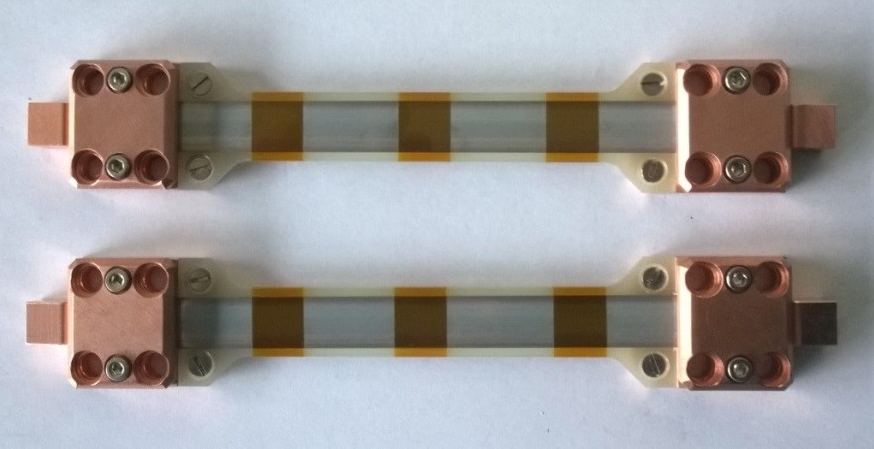 Second generation high-temperature superconductors (2G HTS) tapes generate high magnetic fields at a wide operating temperature range. They have key applications in areas such as fusion, MRI and the electrical grid. In a collaboration between Faraday Factory Japan LLC -the world`s largest producer of 2G HTS tapes and ISIS, the ENGIN-X neutron diffractometer was used to apply strain to tape samples.
Second generation high-temperature superconductors (2G HTS) tapes generate high magnetic fields at a wide operating temperature range. They have key applications in areas such as fusion, MRI and the electrical grid. In a collaboration between Faraday Factory Japan LLC -the world`s largest producer of 2G HTS tapes and ISIS, the ENGIN-X neutron diffractometer was used to apply strain to tape samples.
The team studied the mechanical properties of 2G HTS tape and its critical current. They applied mechanical stress, which influences the tapes' ability to carry high electrical current. This led to lattice deformations, which neutron diffraction was used to measure.
The ENGIN-X instrument is optimised for these types of strain measurements. To provide a cryogenic temperature range, the ISIS sample environment team developed cryogenic testing chambers for neutron scattering measurements of internal strains in engineering materials at cryogenic temperatures.
The tape was exposed to uniaxial tensile force applied from 250-1100 N at a temperature of 77 K. The current through the tape was scanned in the range 22-42 A. One main result of the experiment was establishing a strain limit of 0.473% which corresponds to a tensile strength 1300 MPa for HTS tapes (12 mm width, 60 μm thick Hastelloy substrate). Beyond this, the superconductivity starts to deteriorate irreversibly. The team concluded that the strain limit of the tape is defined by the brittleness of the HTS superconducting material.
“Thanks to the experiment on ENGIN-X instrument, we obtained valuable information required for the design of applications for HTS tape: They include advanced magnetic-confined fusion devices, loss-less energy transmission, zero-carbon aviation and container ships, helium-free MRI systems, advanced propulsion for spaceships, and many more.” said Dr Sergey Lee, Representative Director of Faraday Factory Japan.
This study will provide crucial information for the development of a new generation of HTS superconducting magnets used in MRI, NMR, fusion reactors and particle accelerators.
